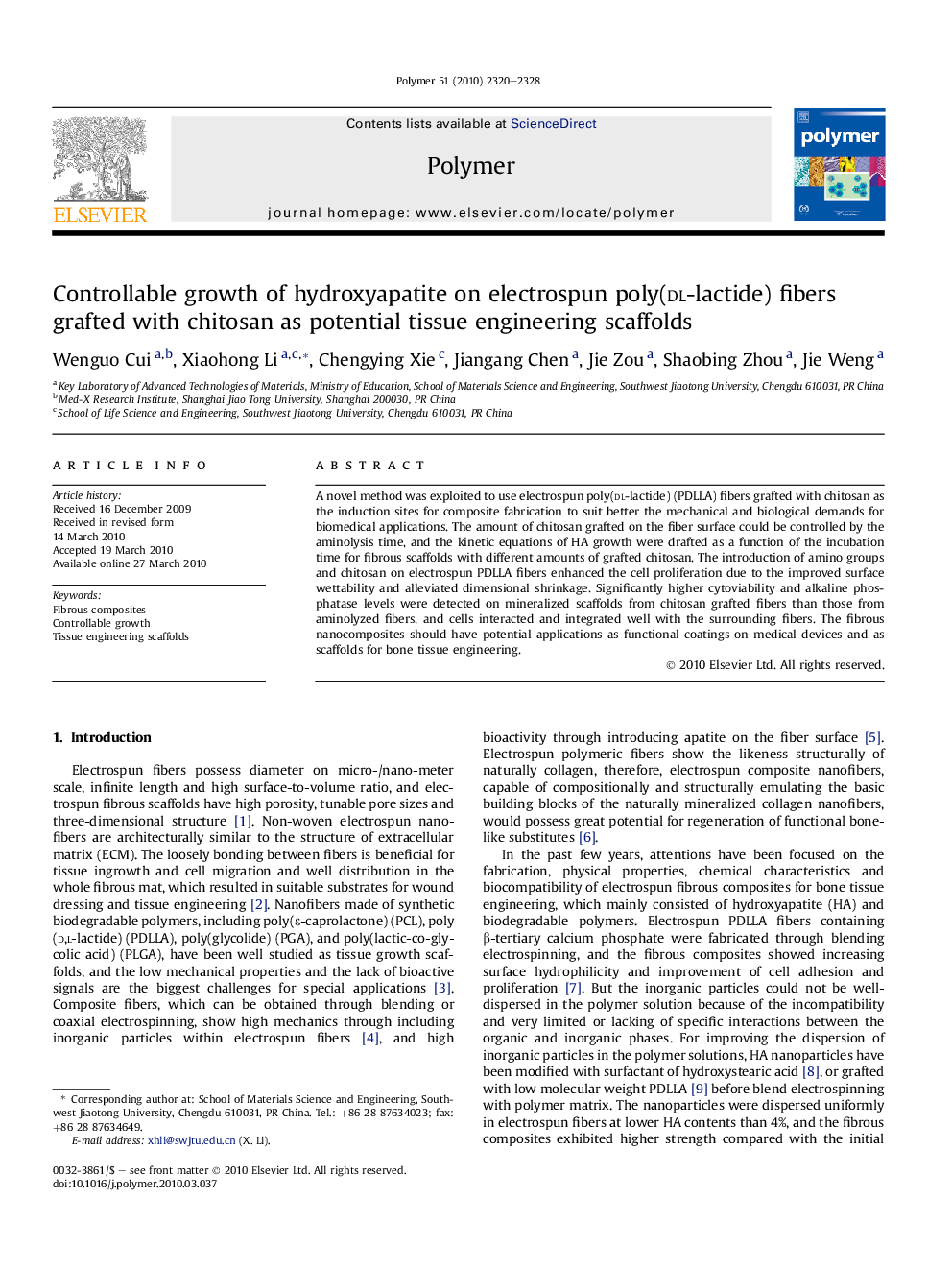| Article ID | Journal | Published Year | Pages | File Type |
|---|---|---|---|---|
| 5183768 | Polymer | 2010 | 9 Pages |
A novel method was exploited to use electrospun poly(dl-lactide) (PDLLA) fibers grafted with chitosan as the induction sites for composite fabrication to suit better the mechanical and biological demands for biomedical applications. The amount of chitosan grafted on the fiber surface could be controlled by the aminolysis time, and the kinetic equations of HA growth were drafted as a function of the incubation time for fibrous scaffolds with different amounts of grafted chitosan. The introduction of amino groups and chitosan on electrospun PDLLA fibers enhanced the cell proliferation due to the improved surface wettability and alleviated dimensional shrinkage. Significantly higher cytoviability and alkaline phosphatase levels were detected on mineralized scaffolds from chitosan grafted fibers than those from aminolyzed fibers, and cells interacted and integrated well with the surrounding fibers. The fibrous nanocomposites should have potential applications as functional coatings on medical devices and as scaffolds for bone tissue engineering.
Graphical abstractDownload full-size image
